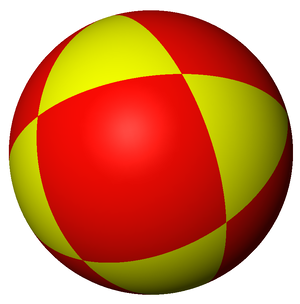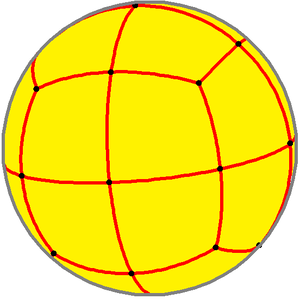Euler Characteristic Exploration
From EscherMath
Jump to navigationJump to search
Objective: Compute the Euler characteristic for some polyhedra and some other surfaces.
In 1750, the Swiss mathematician Leonhard Euler noticed a remarkable formula involving the number of faces F, edges E, and vertices V of a polyhedron. It is now called the Euler characteristic, and is written with the Greek letter :
The Euler characteristic is = V - E + F
For the Platonic solids, the Euler characteristic is always 2.
Polyhedra
The Euler characteristic of a shape is the value of V - E + F and is usually written as .
- Escher's Ivory Ball Study shows a Rhombic dodecahedron, with twelve rhombic faces. Compute V, E, F and for this polyhedron.
- The dual of the Rhombic dodecahedron is the Cuboctahedron, which is a cube with its corners cut off, or equivalently, an octahedron with its corners cut off.
Compute V, E, F, and for the Cuboctahedron. - Compute V, E, F and for the tessellation by 45°-60°-90° triangles in Concentric Rinds.
- Compute V, E, F and for the Deltoidal Icositetrahedron.


The Euler characteristic of a Polyhedron is always 2.
Surfaces
Here, you will compute the Euler characteristic of tessellations that are not on the sphere:
- Compute V, E, F and for this square lattice:

- Compute V, E, F and for this graph:

- Compute V, E, F and for this picture of a torus:

Handin: A sheet with answers to all questions.


